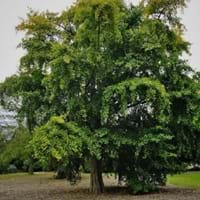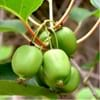Life Span
Perennial
Perennial
Origin
Eastern Asia
China
Types
Actinidia arguta, Actinidia giraldii, Actinidia hypoleuca
Not Available
Number of Varieties
Not Available
Habitat
Dappled Shade, open Woodlands
Deciduous forests, Wild, Woods
USDA Hardiness Zone
3-8
4-9
Sunset Zone
1a, 1b, 2a, 2b, 3a, 3b, 4, 5, 6, 7, 8, 9, 14, 15, 16, 17, 18, 19, 20
A3, 1a, 1b, 2a, 2b, 3a, 3b, 4, 5, 6, 7, 8, 9, 10, 12, 14, 15, 16, 17, 18, 19, 20, 21, 22, 23, 24
Habit
Vining/Climbing
Upright/Erect
Flower Color
White, Ivory
Yellow green
Flower Color Modifier
Bicolor
Bicolor
Fruit Color
Green, Yellow green
Orange, Light Yellow, Tan
Leaf Color in Spring
Green, Dark Green
Light Green, Yellow green
Leaf Color in Summer
Dark Green
Green, Yellow green
Leaf Color in Fall
Dark Green
Yellow, Gold
Leaf Color in Winter
Light Green
Not Available
Plant Season
Spring, Summer, Fall
Spring, Summer, Fall, Winter
Sunlight
Full Sun, Partial Sun
Full Sun
Type of Soil
Loam
Clay, Loam, Sand
The pH of Soil
Neutral
Acidic, Neutral
Soil Drainage
Well drained
Well drained
Bloom Time
Spring, Late Spring, Early Summer
Spring
Tolerances
Shade areas
Pollution, Drought, Salt, Soil Compaction
Where to Plant?
Ground, Pot
Ground
How to Plant?
Grafting, Stem Cutting
Seedlings, Spores, Stem Planting
Plant Maintenance
Low
Medium
Watering Requirements
Average Water Needs, Requires regular watering
Requires watering in the growing season
In Summer
Regular watering required
Lots of watering
In Spring
Moderate
Moderate
In Winter
Average Water
Average Water
Soil pH
Neutral
Acidic, Neutral
Soil Type
Loam
Clay, Loam, Sand
Soil Drainage Capacity
Well drained
Well drained
Sun Exposure
Full Sun, Partial Sun
Full Sun
Pruning
Remove damaged leaves, Remove dead branches, Remove dead leaves
Remove damaged leaves, Remove dead branches, Remove dead leaves
Fertilizers
Apply 10-10-10 amount, fertilize twice a year
All-Purpose Liquid Fertilizer
Pests and Diseases
Botrytis head rot, Japanese Beetles, Leaf Rollers, Nematodes, Phytophthora, Root rot, Sclerotinia blight, Spider mites, Thripes
Red blotch
Plant Tolerance
Shade areas
Drought
Flowers
Showy
Insignificant
Flower Petal Number
Single
Single
Foliage Texture
Medium
Medium
Foliage Sheen
Glossy
Matte
Attracts
Cats
Birds, Butterflies, Squirrels
Allergy
Not Available
Abdominal pain, Nausea, Throat itching, Vomiting
Aesthetic Uses
Cottage Garden
Bonsai
Beauty Benefits
Not Available
Acne, For treating wrinkles, Remove blemishes
Environmental Uses
Shadow Tree
Air purification, Nesting sites for birds, Shadow Tree, soil erosion prevension on hill slopes
Medicinal Uses
Antioxidants, Fiber, Folate, Rich in Potassium, Vitamin C
Aging, Alzheimer’s Disease, anti-allergy, anti-inflammatory, Blood anti-coagulant, Diabetes
Part of Plant Used
Fruits
Bark, Leaves, Seeds
Other Uses
Grown for shade
Can be made into a herbal tea, Condiment, Cosmetics, Medicinal oil
Used As Indoor Plant
No
Sometimes
Used As Outdoor Plant
Yes
Yes
Garden Design
Edible, Feature Plant, Vine
Feature Plant, Shade Trees, Street Trees
Botanical Name
ACTINIDIA arguta
GINKGO biloba 'Chi-chi'
Common Name
Hardy Kiwi
Ginkgo
In Hindi
हार्डी कीवी
बालकुवारी
In German
Hardy Kiwi
Tempelbaum, Ginkgobaum
In French
kiwai
Arbre sacré des temples d'Asie, Arbre aux mille écus
In Spanish
kiwi hardy
Gingo, Árbol de oro
In Greek
σκληραγωγημένα ακτινίδια
Γιγκο, Γκίνγκο
In Portuguese
kiwi Hardy
Nogueira-do-Japão
In Polish
hardy kiwi
Miłorząb chiński, Miłorząb dwudzielny
In Latin
Hardy kiwi
Gingko
Phylum
Magnoliophyta
Ginkgophyta
Class
Magnoliopsida
Ginkgoopsida
Family
Actinidiaceae
Ginkgoaceae
Clade
Angiosperms, Asterids, Eudicots
Cycad
Tribe
Not Available
Not Available
Subfamily
Actinidiaceae
Not Available
Number of Species
Not Available
Not Available
Importance of Hardy Kiwi and Ginkgo
Want to have the most appropriate plant for your garden? You might want to know the importance of Hardy Kiwi and Ginkgo. Basically, these two plants vary in many aspects. Compare Hardy Kiwi and Ginkgo as they differ in many characteristics such as their life, care, benefits, facts, etc. Every gardener must at least have the slightest clue about the plants he wants to plant in his garden. Compare their benefits, which differ in many ways like facts and uses. The medicinal use of Hardy Kiwi is Antioxidants, Fiber, Folate, Rich in Potassium and Vitamin C whereas of Ginkgo is Aging, Alzheimer’s Disease, anti-allergy, anti-inflammatory, Blood anti-coagulant and Diabetes. Hardy Kiwi has beauty benefits as follows: Not Available while Ginkgo has beauty benefits as follows: Not Available.
Compare Facts of Hardy Kiwi vs Ginkgo
How to choose the best garden plant for your garden depending upon its facts? Here garden plant comparison will help you to solve this query. Compare the facts of Hardy Kiwi vs Ginkgo and know which one to choose. As garden plants have benefits and other uses, allergy is also a major drawback of plants for some people. Allergic reactions of Hardy Kiwi are Not Available whereas of Ginkgo have Abdominal pain, Nausea, Throat itching and Vomiting respectively. Having a fruit bearing plant in your garden can be a plus point of your garden. Hardy Kiwi has no showy fruits and Ginkgo has no showy fruits. Also Hardy Kiwi is not flowering and Ginkgo is not flowering . You can compare Hardy Kiwi and Ginkgo facts and facts of other plants too.





